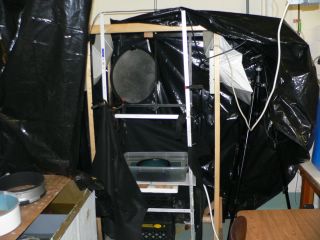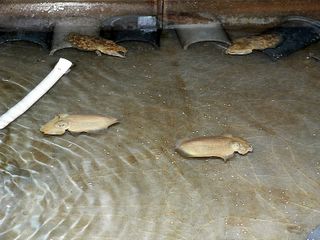Is an intern's work ever done? God I hope so... Alt. Title I'm going to be a Photoshop Wiz when this is all over
Part of being an intern is getting to do all the boring, mundane stuff that would otherwise bog down the researchers (whee). I accept that. It's still important work that needs to get done. But by god can it get mind-blowingly boring! Case in point... for the colorblind research... we had 16 checkerboard substrates and 10 experimental animals. Yours truly also got to run the black and white control experiments on each animal just to get a baseline for each one's disruptive pattern.
Each experiment ran for 30 minutes, with the camera recording 1 second every 30 seconds. That's 60 "images". Alex, the Portuguese PhD student gets to go through all those tapes and choose the 10 best images to import into jpegs. Are you keeping track? Ok, now I take those images, copy and paste the cuttlefish out of the substrate and onto a white background and save it to a new file with a random number name so Alex and Lydia can grade it without bias to animal or substrate. Not to mention adjusting the lighting or contrast if the image came out too dark or out of focus which often happened. So if you've been crunching numbers, and I know you have, admit it, that's 16 substrates x 10 animals x 10 images per animals = 1600. Oh, don't forget another 90 from the control (since an animal died), so 1690 images to format in total. SIIIGGGGGHHHHH.
Anyway, here's an example of my work. Try to contain yourself.

















